Chile
Chile
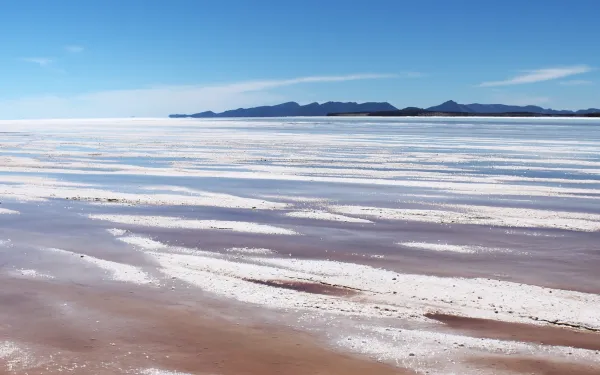
UN takes major step toward prioritizing justice regarding transition minerals
The United Nations’ Critical Energy Transition Minerals Panel issued a series of recommendations and voluntary principles aimed at ensuring equitable, fair and sustainable management of these minerals. The guidelines are aimed at governments, industry and other stakeholders in energy transition processes.This comes at a time when the global renewable energy movement, which seeks to reduce emissions that exacerbate the climate crisis, has highlighted how the environmental and social costs of transition minerals extraction fall disproportionately on local communities and ecosystems.Claudia Velarde, co-director of the Ecosystems Program of the Interamerican Association for Environmental Defense (AIDA), said: “For Latin America, the recommendations and principles are very important, since a large part of the reserves of resources essential for the energy transition are in the region, in complex territories rich in biological and cultural diversity.Significantly, the panel places human rights and justice at the center, recognizing the complexity of the energy transition and the inequality between countries in the global South that host the minerals and those in the North that need them for their own transition.To move forward with justice, the energy transition must break with the development status quo, include perspectives from the global South, respect the human rights of local communities, and recognize ecosystem boundaries.While there is still a long way to go to achieve a truly just and popular energy transition for Latin America, we hope that this contribution will be a step in that direction.” The recommendations and principles are contained in a report in which the Panel explains how the transition t to renewable energy can be based on justice and equity, promoting sustainable development, respect for people, and protection of the environment in developing countries.The Panel proposes seven voluntary guiding principles, based on standards, commitments and legal obligations established in United Nations texts:Human rights must be at the core of all mineral value chains.The integrity of the planet, its environment and biodiversity must be safeguarded.Justice and equity must underpin mineral value chains.Development must be fostered through benefit sharing, value addition and economic diversification.Investments, finance and trade must be responsible and fair.Transparency, accountability and anti-corruption measures are necessary to ensure good governance.Multilateral and international cooperation must underpin global action and promote peace and security. Read the panel report: https://www.un.org/sites/un2.un.org/files/report_sg_panel_on_critical_energy_transition_minerals_11_sept_2024.pdfLearn more about panel: https://www.un.org/en/climatechange/critical-mineralsPress contact:Víctor Quintanilla (Mexico), [email protected], +5215570522107
Read more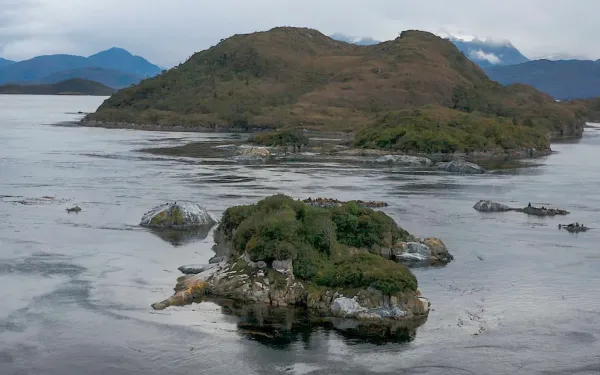
The Kawésqar people and the defense of their "maritorio" in Chile
By Liliana Ávila and Cristina Lux* A little over a month ago, the community Kawésqar Grupos Familiares Nómades del Mar sent us a very special invitation. The appointment was near the sea, near their territory, or more precisely, near their "maritorio", a place of islands, islets and archipelagos. There, the borders between sea and land are blurred and the trees grow sideways, adapted to the strong winds. The maritorio is a concept and also a way of inhabiting and understanding the world. It evokes the image of "territory", but seen from and in the sea. As a concept, it emerged in the context of what is known as nisology, or the study of islands. The place we visited is located in the fjords of Magallanes, the southernmost region of Chile, about two hours from Punta Arenas, the regional capital. The Kawésqar people tell us that less than a century ago, this maritorio was their home. There, their grandfathers and grandmothers sailed among the fjords, built their canoes, fished and dived. They went into the icy sea without special neoprene suits, protected with sea lion oil, and there they learned the secrets that its depths held. In the midst of fjords, winds and intense climates, these people developed their own systems of thought and life. But the lives of the Kawésqar have changed radically in recent decades. They tell us so. The vast territory that previous generations inhabited for centuries is now enclosed. The process of eradication has been accompanied by the commercialization of the land, the creation of extensive pastures and, more recently, the development and expansion of the salmon farming industry. Industrial salmon production has serious and lasting impacts on marine ecosystems. The communities of Kawésqar are well aware of this. Salmon is an exotic and carnivorous species for Chile, raised in huge farms: hectares of cages in the sea. The introduction of exotic species (which threaten native species), the excessive use of antibiotics, salmon escapes, the generation of waste, the treatment of large quantities of dead salmon, the excessive discharge of organic matter into the sea, and the generation of anaerobic environments (total or partial loss of oxygen necessary for life to thrive) are just some of the impacts of salmon farming in Chile. These impacts not only accumulate in the waters and on the seabed, but also penetrate the lives of the Kawésqar communities. The maritorio that their grandfathers and grandmothers sailed is now a desecrated space. The processes of reconstructing their identity, the appropriation of sacred places and the rites that are part of their collective memory have been affected by the development of an industry that sees the sea only as a space of economic exploitation and not as the sacred place where, in the not so distant past, men and women developed their worldviews and ways of life. Despite everything, the Kawésqar are a living people who meet, who gather around the sea and discuss strategies to rebuild their cultural fabric. They also come together to honor their grandfathers and grandmothers, to activate the genetic memory that connects them to the sea, to dive into its waters and fight for a salmon-free sea and for a country that recognizes the cultural diversity that runs through its history. We also connect with the legacy of the Kawésqar. Swimming with people from the community in these seas that have been navigated for thousands of years allowed us to look out a window that blurs the present and shows us alternatives. A present that allows life and coexistence with the sea, its ecosystems and its balance. Their struggle— supported by AIDA, the NGO FIMA, Greenpeace and many other organizations— has borne fruit. It has highlighted the impact of salmon farming in Chile and the need to end our dependence on it. But the challenges are still enormous. Salmon farming continues to ravage the seas inside and outside protected areas, in the most remote areas of Patagonia, occupying spaces that were once shared by all the peoples and creatures that inhabited the territory. Meanwhile, the people of Kawésqar continue to travel through their territory —rewarded and lived in and from the sea— identifying and recomposing their history, swimming in the waters that surround them. They do not lose hope of returning to their sea; they to continue to exist in it. *Liliana Avila is coordinator of AIDA's Human Rights and Environment Program; Cristina Lux is an attorney with the Climate Program.
Read more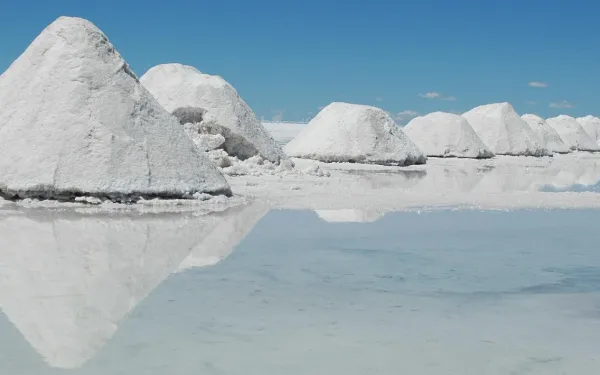
Lithium unveiled: Origins, extraction and environmental implications
One of the paradoxes of the energy transition is that it replaces the use of fossil fuels with mineral resources whose extraction and refining can have negative impacts on ecosystems, species and communities. This is happening with lithium, a mineral that has traditionally been used in glass and ceramics to provide greater adhesion and hardness, but is now being used primarily to make the batteries required by technologies that eliminate or reduce the use of fossil fuels. This has led to an increase in its demand. The serious social and environmental impacts of its extraction have been hidden or minimized. What makes lithium special? Lithium is a mineral in high demand due to its unique properties: It is the lightest metal with the highest electrochemical potential. It has a high energy storage capacity. It is malleable, so it can be adapted to different sizes, shapes and designs. These qualities make it a key material in the manufacture of batteries for cell phones, computers and, most importantly, electric vehicles. Lithium is considered key to the energy transition because it can be used to store non-conventional renewable energy, such as wind and photovoltaic power. Where it is: The so-called "lithium triangle"? The primary sources of lithium are salt flats, which are wetlands covered with a saline crust that contain brines, bodies of water in which many salts and elements, including lithium, are dissolved. Salt flats are attractive to the mining industry because of the relative technical ease of exploitation, low operating costs and low energy requirements to extract lithium from them compared to other sources. Worldwide, the salt flats of Argentina, Bolivia and Chile account for 54 percent of lithium resources (potentially mineable material). In addition, Argentina and Chile hold 46 percent of the world's lithium reserves (the portion of known resources with a high level of confidence and proven economic viability). The mining industry has dubbed the region where the mineral is concentrated the "Lithium Triangle" - because that is all they see there - which includes northeastern Argentina, northern Chile and southern Bolivia. But there is much more than lithium in this region. There are also communities, ecosystems and species that depend on these salt flats. The region's inhabitants are engaged in small-scale ranching and subsistence agriculture, activities that require water, an already scarce resource in these latitudes. How is lithium mined from the salt flats? The procedure is as follows: The salt flat is drilled. The brine is poured into large pools or basins. Wait for the water to evaporate so that the lithium concentration increases. When the concentration is sufficient, the brine is sent to an industrial plant. The brine is chemically treated to produce lithium carbonate, which is marketed for battery production. Lithium extraction, especially by this method, involves huge consumption and loss of water because: Water is lost in pumping brine. Evaporation in ponds requires two million liters of water for every ton of lithium produced. Water is also needed in the final processes to obtain lithium carbonate and separate it from the rest of the compound. Lithium mining is threatening South America's salt flats, which are Andean wetlands, affecting local water availability and threatening the survival of communities and species living around these fragile ecosystems. The energy transition is urgent, but it must be equitable and not at the expense of other natural resource extraction that endangers people and the environment. sources -Maritza Tapia, “Claves del litio: el metal más liviano y con mayor potencial electroquímico”, Universidad de Chile. -Heinrich Böll Stiftung Colombia, “Litio: los costos sociales y ambientales de la transición energética global”. -Florencia Ballarino, “¿Qué es el litio, para qué sirve y de dónde se extrae en la Argentina?”, Chequeado. -Wetlands International, “El impacto de la minería de litio en los Humedales Altoandinos”. -Rodolfo Chisleanchi, “‘Triángulo de litio’: la amenaza a los salares de Bolivia, Chile y Argentina”, Mongabay Latam. -U.S. Geological Survey, Mineral Commodity Summaries, January 2023, “Lithium”.
Read more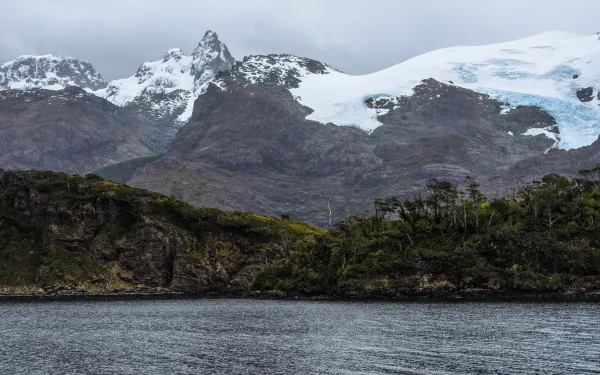
5 years of the Kawésqar National Reserve: pending issues for its protection
Local communities denounce that the area is highly affected by salmon farming, which is failing to comply with environmental regulations.On January 30, 2019, the Official Gazette published the decree creating the Kawésqar National Reserve in Magallanes, which extends over 2,842 hectares between fjords and Patagonian peninsulas. The purpose of this classification was to guarantee the protection of the area, its territory and biodiversity, as well as to establish that it is the duty of the State to ensure its conservation. This year, 2024, marks the fifth anniversary of this milestone, which begs the question: is the reserve's objective being achieved? The community's claimsWith the qualification of National Reserve, this area was separated from the Kawéskar National Park, which offers broader protection. In the opinion of the local communities, this administrative division determines in a whimsical way what to prioritize and separates the land from the sea, as if they were independent elements, which causes "divisions and confusion to grow at all levels," says Eric Huaiquil Caro, a member of the Kawésqar Communities Kawésqar Family Groups Nomads of the Sea. He also says that the "agreements that were made in the indigenous consultation have not been responded to." Finally, Caro asks that the conservation of this reserve be done "without salmon farms and we hope that this will be established in the Management Plan that will be submitted for consultation in March 2024." An overstressed areaWithin the Kawésqar National Reserve lie the richest kelp forests in the country, an ecosystem considered key to combating climate change, as they can absorb high levels of carbon dioxide and regenerate marine systems. Although the State must guarantee their protection, the area is experiencing great pressure from the salmon farming industry. For example, there are 133 approved concessions in the entire Magallanes Region and 85 in process, of which 68 approved and 57 in process are in the Kawésqar National Reserve, "which seems unusual to us because it has been proven that the salmon farming industry is neither sustainable nor compatible with the ecosystemic care of the reserve. This is fundamental to the creation of the Reserve's Management Plan, which is currently being designed and which should establish the incompatibility of the industry within the zone's protection mandate, as documented in the report we have prepared together with the communities," says Cristina Lux, an attorney with the Interamerican Association for Environmental Defense (AIDA)."Forty-three percent of the concessions approved within the Kawésqar National Reserve have presented anaerobic conditions within the framework of their operations, according to information obtained from the Environmental Reports for Aquaculture. This means that they suffer or have suffered total or partial loss of oxygen, which affects the living conditions of all of the area's biodiversity," adds Estefanía González, Campaigns subdirector at Greenpeace Chile.The impact, explains Sofía Barrera , an attorney for FIMA, is "enormous and highly destructive.""To begin with, these farming centers are concentrated in just seven sectors (Staines Peninsula, Taraba Sound, Poca Esperanza Strait and Vlados Channel, Glacier Sound, Skyring Sound, Desolation Island and Xaltegua Gulf), which also concentrates their synergistic effects. Some of these are the impact of boat routes, the killing of sea lions to prevent them from attacking the salmon cages, the overproduction of salmon, the presence of garbage outside the concession polygons and the detection of the ISA virus in the farming centers, which ends up making the rest of the marine ecosystem sick, something that has been recognized by Environmental Courts," adds Barrera. "In addition, the dispersion of organic matter from the cultivation centers causes eutrophication and harmful algal bloom events (HAB), generating significant changes in water quality and affecting marine life," adds González.In the opinion of the representatives of these three organizations, despite the legal prohibitions and environmental requirements, the fact that many of these projects have been submitted and approved through environmental impact statements raises legal and political questions. "Why are the authorities not ensuring the real care of this area, whose interests are being taken care of, and how is the salmon industry influencing our authorities," asks Barrera.Unfortunately, González adds, when explanations have been requested, "we have not received answers or certainty. That is why it is urgent to advance towards a management plan that really protects this ecosystem and does not allow more centers that put biodiversity at risk." Press contactVíctor Quintanilla (AIDA), [email protected], +521 5570522107
Read more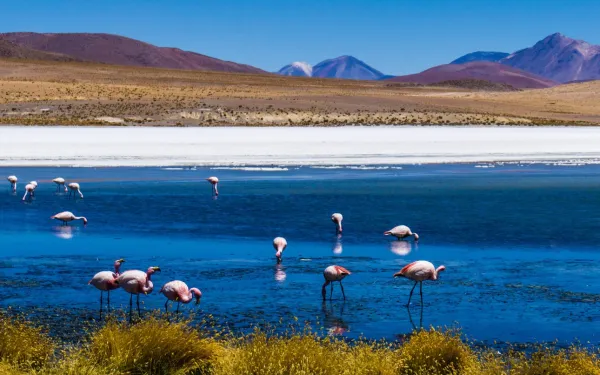
The Alliance for the Andean Wetlands brings together organizations for the protection and conservation of wetlands
The alliance seeks to protect the water, biodiversity, territories and ways of life that depend on these ecosystems in Latin America, especially in Argentina, Bolivia and Chile. With the aim to promote the protection and conservation of wetlands -as well as the water, biodiversity, territories and livelihoods of indigenous and peasant communities that depend on them- the Alliance for Andean Wetlands (Alianza por los Humedales Andinos) brings together the Fundación Ambiente y Recursos Naturales (FARN) and the PUCARÁ Assembly (Pueblos Catamarqueños en Resistencia y Autodeterminación), of Argentina; the Centro de Documentación e Información de Bolivia (CEDIB) and Empodérate, of Bolivia; ONG FIMA, Defensa Ambiental and Fundación Tantí, of Chile; and the Interamerican Association for Environmental Defense (AIDA), a regional organization.The Andean wetlands - including salt flats, lakes and lagoons - are recognized worldwide as ecosystems of high environmental and social significance. They are also extremely fragile due to their characteristics, whose central element is water, a common good that controls the environment and wildlife. Their vulnerability also rises from the threats they face, including the climate crisis and the negative impacts of extractive activities such as the mining of lithium, copper and other minerals considered "critical" for the transition to new forms of energy generation.In this sense, the increase in demand for lithium in the global north has set in motion an accelerated process of extraction and production at a global level, focused on regions rich in this mineral, such as the Andean salt flats of Argentina, Bolivia and Chile, which are home to more than 53% of proven global reserves.From November 30 to December 12, representatives from nearly 200 countries will meet in Dubai, United Arab Emirates during the twenty-eighth United Nations Climate Change Conference (COP 28) to continue advancing the implementation of the Paris Agreement, which seeks to strengthen the global response to the climate emergency.The protection of wetlands is crucial in this task because they are ecosystems that act as natural carbon sinks, helping to mitigate the crisis.Accelerating the energy transition will be one of the main lines of action at COP 28Faced with this global trend, the alliance promotes a just, participatory and popular socio-ecological transition with a long-term vision, prioritizing integrated water management under a socio-environmental and climate justice approach. Thus, it supports and accompanies local communities and organizations in the care of Andean wetlands and in the construction of socioeconomic alternatives that go beyond mining extractivism.The alliance also seeks to ensure the participation of communities and their access to complete, truthful and transparent information, as well as to provide information to the global society - involving organizations, States and the private sector - highlighting the value of the Andean wetlands and the multiple threats they face.To achieve its objective, the alliance employs pedagogical, legal, research, advocacy, communication and mobilization strategies collectively and in dialogue with communities and organizations. Recognizing the differentiated impacts of the climate crisis on women, girls, sexual dissidents and other vulnerable groups, the alliance incorporates a gender perspective in all its activities. Press contacts:Víctor Quintanilla, AIDA (regional), [email protected], +521 5570522107Carlos Ulloa Fuentes, Fundación Tantí (Chile), [email protected] +569 37614815Rocío Wischñevsky, FARN (Argentina), [email protected], +541159518538Manuel Fontenla, Asamblea PUCARÁ (Argentina), [email protected], +54 9 3834790609Faviola Rivera Seifert, Empodérate (Bolivia), [email protected], +591 77129989Oscar Campanini, CEDIB (Bolivia), [email protected], +591 70344801
Read more